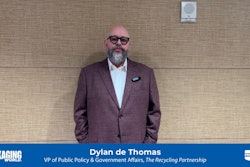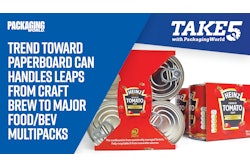Seeking to support waste recovery and recycling infrastructure by imposing fees on the Consumer Packaged Goods companies that initially produce what will eventually become waste, Extended Producer Responsibility (EPR) isn’t a new concept. It already exists for products like batteries and lightbulbs. Now, after being held at arm’s length for more than a decade, resistance to EPR as it applies to packaging waste and recycling appears to be eroding, and momentum behind it is growing. For CPGs that project a commitment to sustainability and serve consumers with an eye for sustainability but also have a bottom line to consider (which describes just about everyone these days), this can be a tough tightrope to walk. At least that’s what I’m hearing. I’ll try to share here a few CPG opinions on the topic that I’ve run across lately.
Of course, it’s important to first note that brands and CPGs are by no means universally against EPR. In a real game changer, more than 100 major CPGs were signatories of a June Ellen MacArthur Foundation statement endorsing EPR in packaging. Check Out PepsiCo’s “it’s part of the mix” approach to EPR, for instance (interview with Tom Mooradian, Sr. Environmental Sustainability at PepsiCo). There’s a spectrum of attitudes on the topic, with some brands being all for it—with the perfectly reasonable caveat that they’d like to have a seat at the table to discuss the bills they might be footing.
 | Read more about the Ellen MacArthur Foundation's global call for Extended Producer Responsibility (EPR), signed by more than 100 major brands. |
Despite the disparate feelings toward EPR, the brands I spoke to on the topic agree on one thing: we’re well past the adoption inflection point. EPR has recently shifted from one of many hypothetical tools in the packaging sustainability toolkit to what seems to be an eventuality. State-level legislation has been percolating of late in at least seven states, with Maine’s LD 1541 (read more here) being the first over the finish line last month, and a bill in Oregon is likely coming soon.
With the dominos falling, brands and stakeholders (read a comprehensive recent PW column on the topic from AMERIPEN here) are thus setting their sights on defining these three main tenets of EPR:
1. Where are the fees going? Realizing these fees are inevitable, brands tend to be on board with EPR, but only when the flow of money is transparent. CPGs want to see any funds raised from fees to be earmarked for either recycling infrastructure and operations or for consumer education. They also seek to influence what types of organizations are on the receiving end so they can maximize impact and get the most bang for the buck.
2. Who is setting the fees? There is a lot of conversation around who should set the EPR fees. Generally, the packaging industry recommends having an independent consortium of stakeholders who would work together with the government to set the fees and distribute funds. This could be in the form of a Producer Responsibility Org. (PRO). Maine’s law has some PRO and some others who will set fees, but it's not exactly clear. Which brings us to perhaps the biggest point:
3. Why not one standardized national approach? We should have learned our lesson from our earlier (and current) recycling infrastructure situation, which suffers from being a fragmented patchwork of regulations and processes that vary by municipality. Piecemeal doesn’t work for recycling infrastructure and inconsistent fee structures would unnecessarily complicate the funding that supports that recycling infrastructure. Brands, especially national ones, say that EPR fees leveraged by each individual state is a challenge. They say a federal program would be much more useful. The current Consumer Brands Association’s Recycling Leadership Council (RLC), of which PMMI is a member, demonstrates standardization efforts on the recycling infrastructure front (read more here). Shouldn’t the EPR funding and fees follow suit?
And here’s a common-sense, “just my two cents” idea floated by a brand I spoke to on the topic: Why not allow a brand to pay less in EPR fees if that brand is actively practicing circular packaging solutions? Post-consumer materials and resins are scarcer and more expensive than their virgin counterparts. Often that price gap is the barrier keeping brands from choosing PCRs instead of cheaper virgin. If brands can have their fees offset because they are using PCR, it will defray some of the cost impact of using recycled content, promoting a pull market for post-consumer materials.
With the EPR horse apparently out of the barn, we’re keeping a close eye on how NGOs, retailers, brands, and their suppliers are vying to wrangle that pony in a way that benefits the entire stakeholder universe. And at the center of that universe is our planet.



























